Affiliate disclosure: This post may contain affiliate links. Please see our Privacy Policy.
Plantain might be one of the most useful plants growing right under your feet—literally. This common lawn weed has a long history of use in folk medicine, especially for soothing skin irritation, drawing out splinters, and calming inflammation.
Whether you’re tucking a leaf into your sock on a hike or turning it into salve at home, plantain is a must-know herb for any forager or home herbalist.
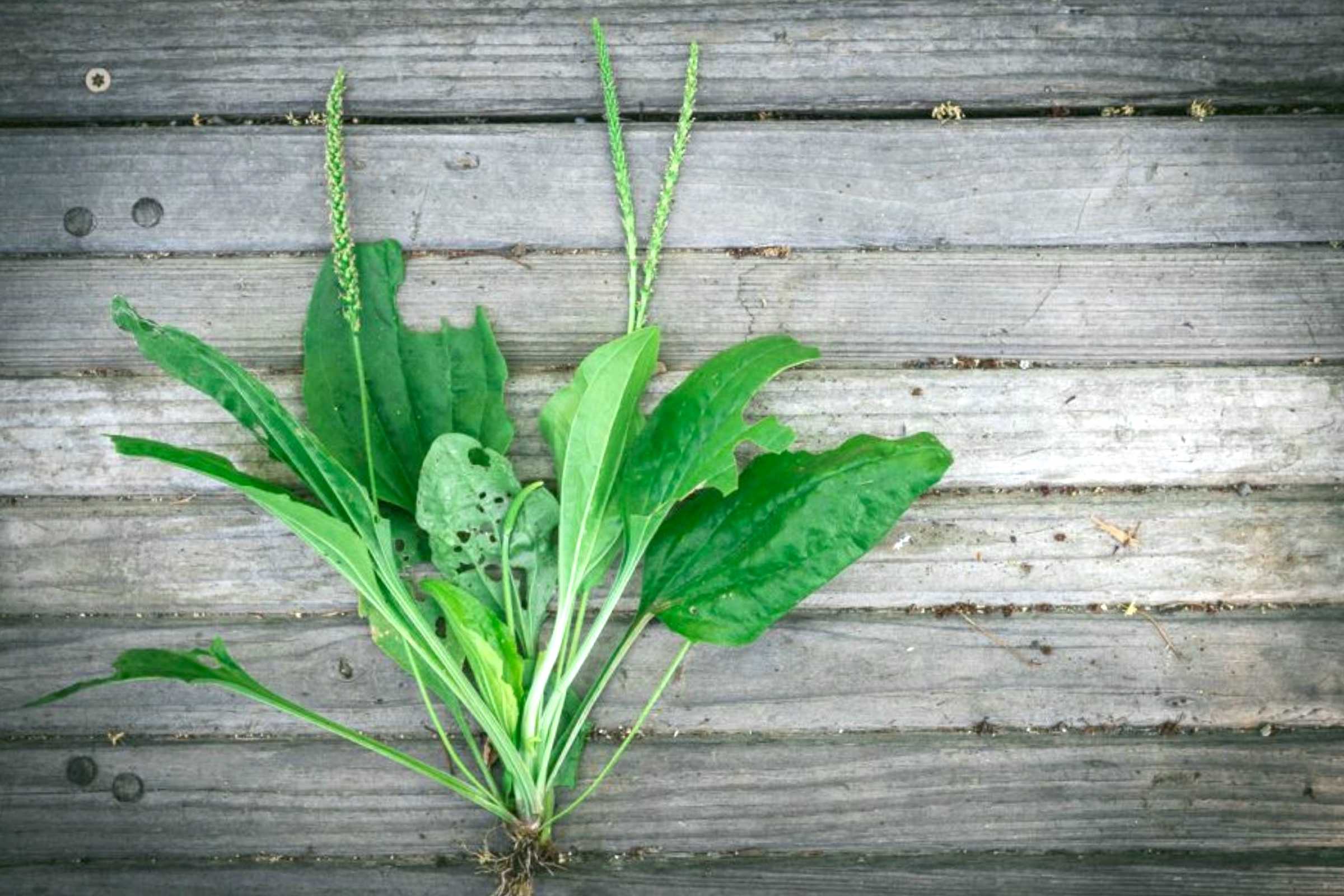
Table of Contents
- Identifying Plantain
- Harvesting Plantain
- Medicinal Properties of Plantain
- Ways to Use Plantain
- Fresh Plantain Poultice
- Plantain Infused Oil
- Plantain Salve
- Drawing Ointment for Splinters and Stings
- Plantain Tea
- Mouth Rinse or Sore Throat Gargle
- Plantain Tincture
- Soothing Bath Soak
- Cracked Skin and Callus Treatment
- Plantain for Chickens (and Pets)
Plantain is one of those humble backyard weeds that herbalists absolutely love—and for good reason. It’s a powerful little plant that shows up in driveways, lawns, garden paths, and sidewalks, often surviving heavy foot traffic and poor soil without complaint. But while it might not be much to look at, it’s one of the most useful herbs you can keep on hand.
This is the same plant that herbalists have turned to for centuries to help draw out splinters, soothe bug bites, and heal scrapes. It’s anti-inflammatory, antimicrobial, and surprisingly versatile. Once you learn to recognize it, you’ll start seeing it everywhere—and wondering how you ever got by without it.
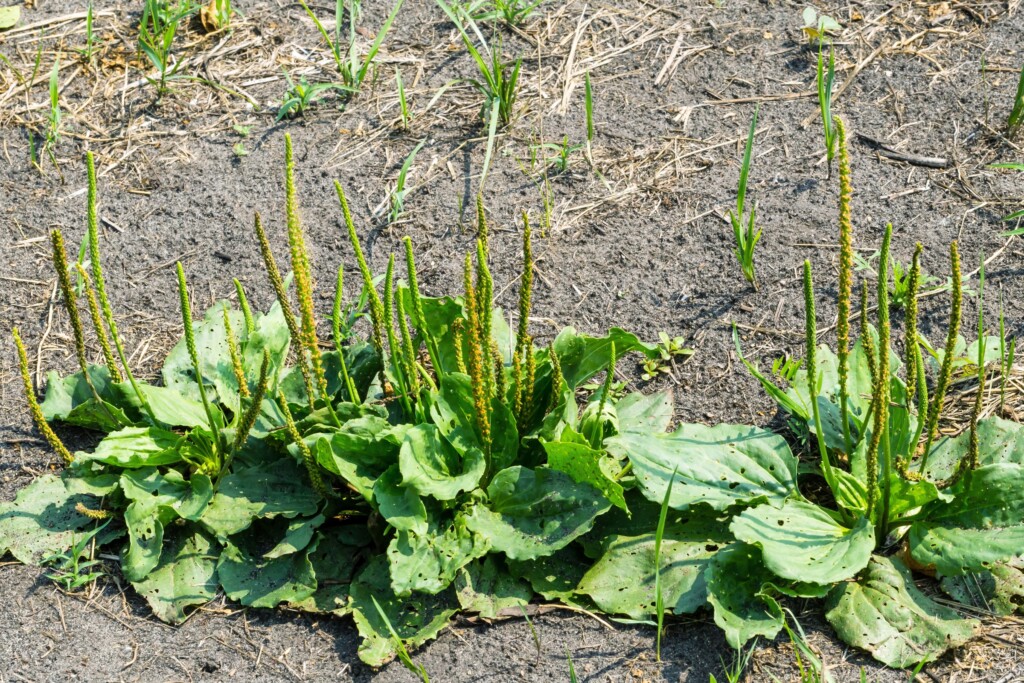
Identifying Plantain
There are two main types of plantain you’re likely to see: broadleaf plantain (Plantago major) and narrowleaf or ribwort plantain (Plantago lanceolata). Both have similar medicinal uses and are easy to identify. Broadleaf plantain has smooth, oval-shaped leaves that grow in a low rosette, while ribwort plantain has long, narrow leaves with prominent parallel veins.
No matter the variety, plantain leaves grow close to the ground and send up slender flower stalks that eventually turn brown and drop seeds. The key identifier is the leaf veins—they run from the base of the leaf all the way to the tip, and they’re hard to miss.
You’ll find plantain in sunny yards, trailsides, pastures, and even sidewalk cracks.
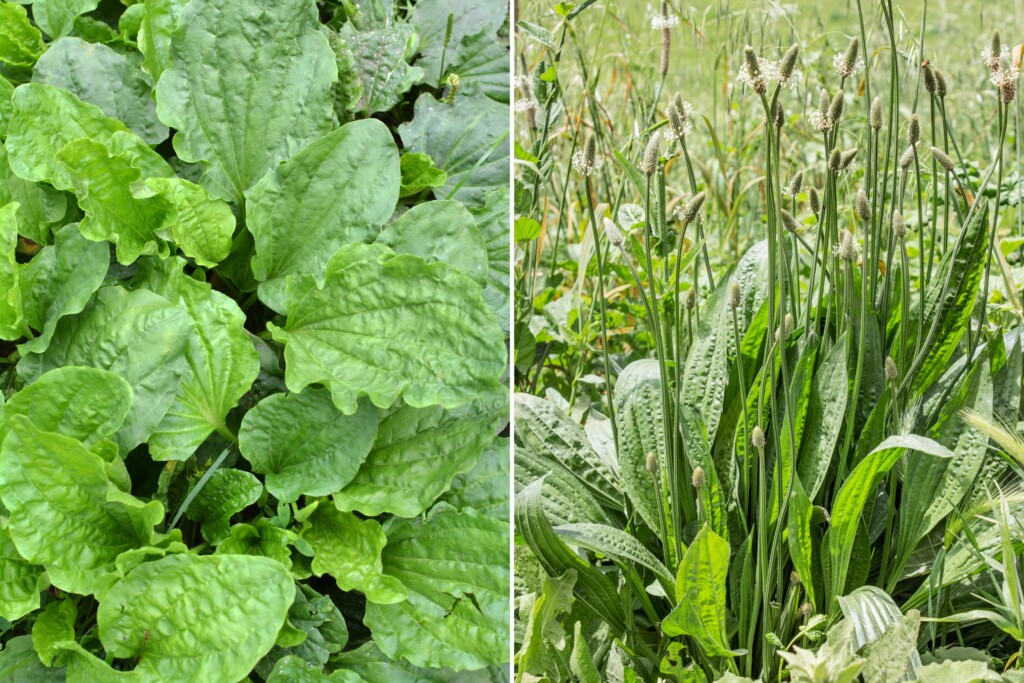
Harvesting Plantain
Plantain is best harvested in spring and early summer when the leaves are still tender and green. Just snip or pinch off the leaves close to the base of the rosette. Choose clean, untrampled plants growing away from roadsides and pet traffic.
If you’re drying plantain for later use, lay the leaves in a single layer on a drying screen or paper towel and allow them to air dry in a warm, dry place. Once crisp, store them in an airtight jar out of direct sunlight. Fresh leaves can also be used right away for poultices, teas, or infusions.
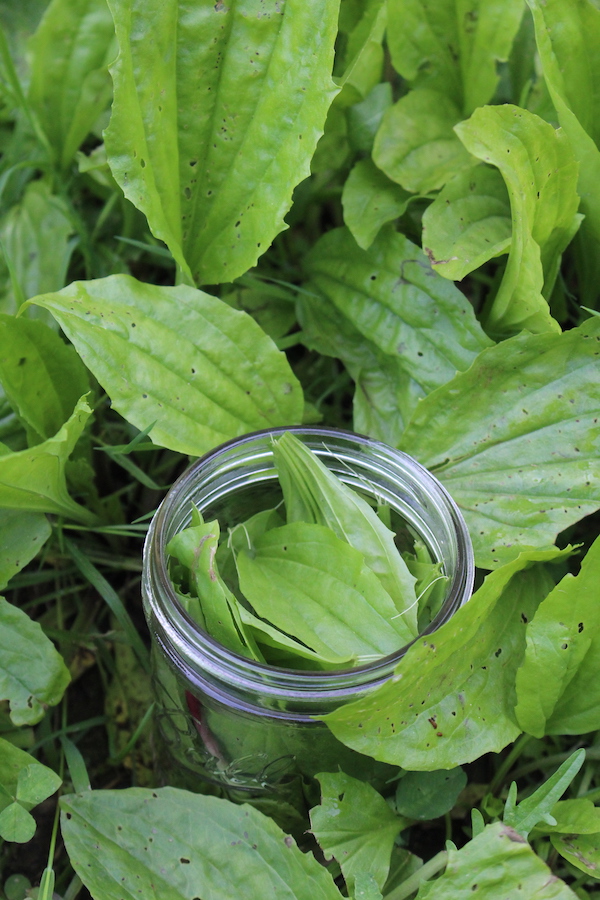
Medicinal Properties of Plantain
Plantain might look like an ordinary weed, but its medicinal resume is impressive. Herbalists often use it for:
- Drawing: It’s famous for pulling out splinters, stingers, and infection from wounds.
- Anti-inflammatory effects: Great for calming irritated skin, sore throats, and gut inflammation.
- Antimicrobial action: Helps prevent infection in cuts and scrapes.
- Astringent properties: Tightens and tones tissues, making it useful for wound care and oral health.
- Mucilage content: Soothes internal tissues and helps coat the throat and digestive tract.
This little plant is basically a portable herbal first-aid kit.
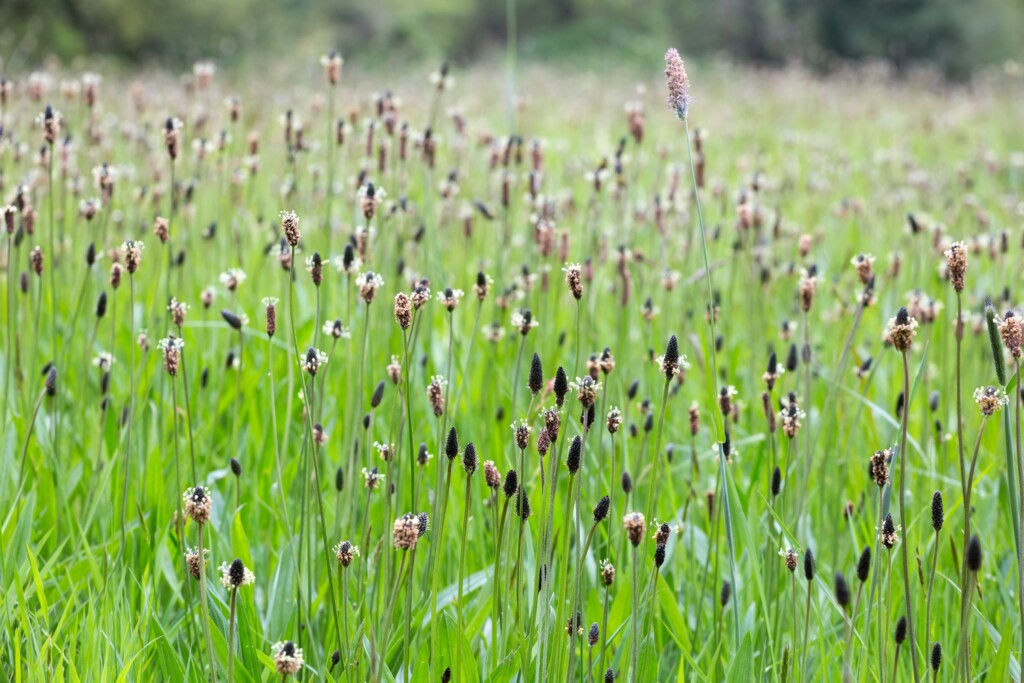
Ways to Use Plantain
Plantain is one of the most approachable herbs to use—no special tools or complicated recipes required. You can apply it fresh in the field or turn it into shelf-stable remedies for year-round use.
Here are ten of the most practical ways to work with this weedy wonder.
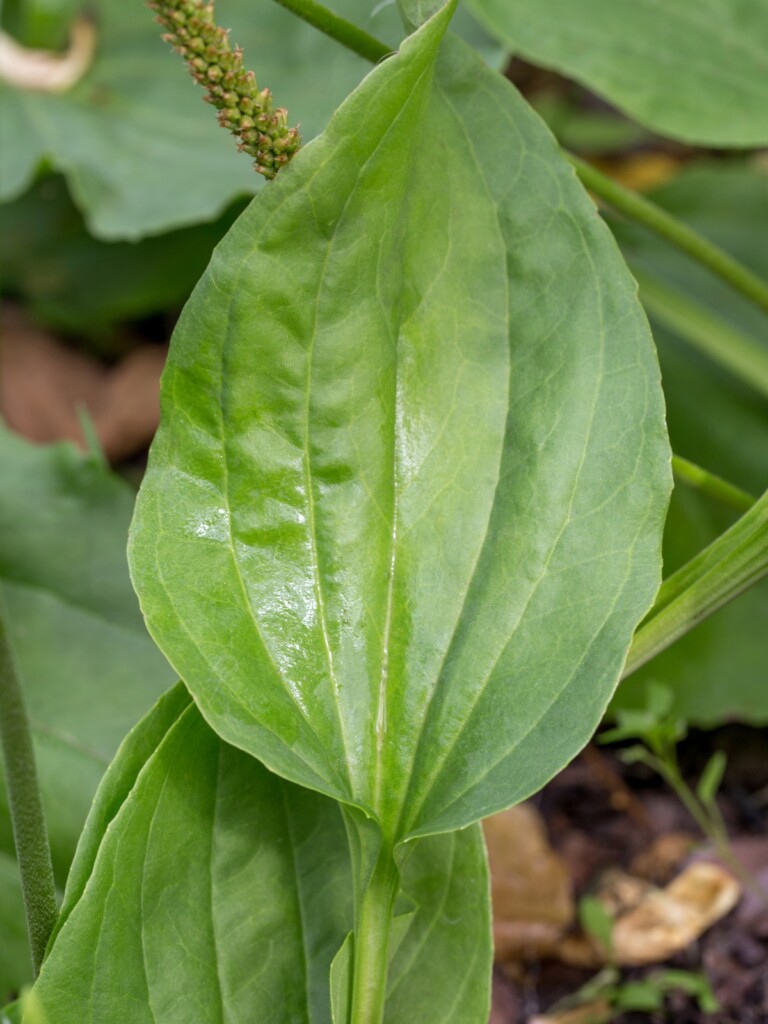
Fresh Plantain Poultice
One of the simplest ways to use plantain is as a fresh poultice—just mash up the leaves and apply them directly to the skin. This is the classic remedy for bee stings, bug bites, poison ivy, or splinters.
If you’re out on a hike and get bitten by a mosquito, just chew a leaf a bit (yep, chew it), then slap the mash on the bite. It works fast to reduce swelling and itchiness. I’ve used it on everything from wasp stings to thorn pricks—it’s one of the best field remedies there is.
Some people just take a leaf and place it over the injury like a bandaid, but it’s more effective to bruise or chew the leaf to get it to release some of it’s juices onto the area.
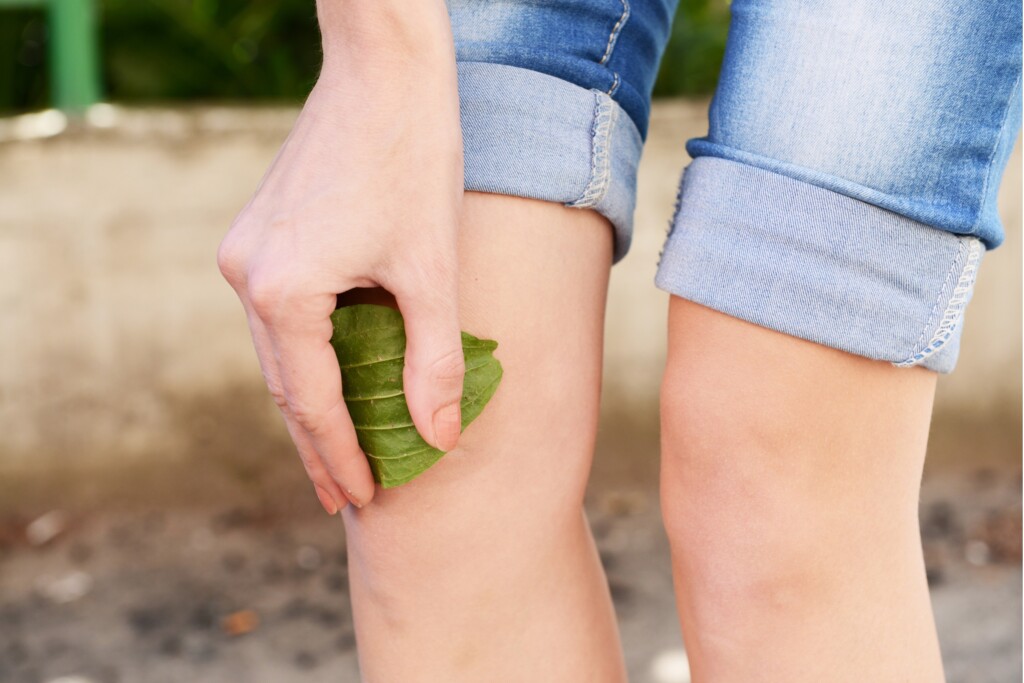
Plantain Infused Oil
Plantain’s skin-soothing properties really shine in infused oil. To make it, dry the leaves completely, then steep them in a neutral carrier oil like olive oil for a few weeks. Strain and bottle the finished oil for use on its own or as a base for salves.
This infused oil is great for calming irritated skin, healing cracked heels, or massaging into rough hands after garden work. It’s gentle enough for sensitive skin and a perfect way to preserve fresh plantain for later use.
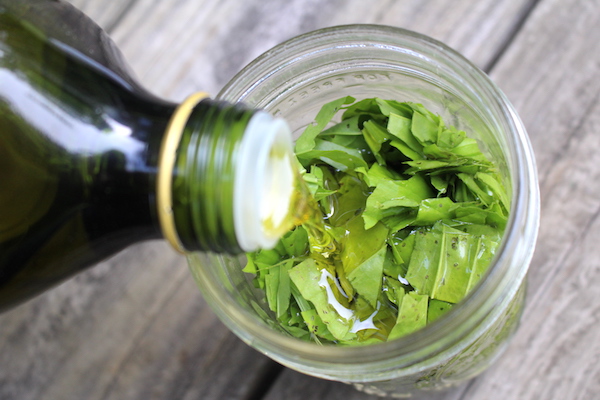
Plantain Salve
If you have infused oil on hand, it’s a quick step to make a healing salve. Melt in some beeswax, pour into tins or jars, and you’ve got yourself an all-purpose herbal balm.
I use plantain salve for everything: dry cuticles, bug bites, minor scrapes, even diaper rash. It’s gentle, effective, and travels well. I always keep a little jar of it in my bag during summer months when the bugs are out.
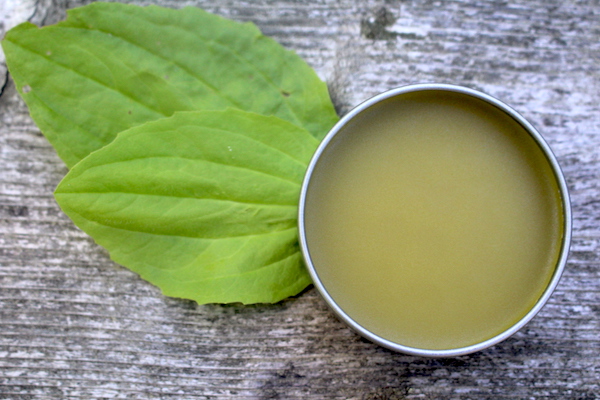
Drawing Ointment for Splinters and Stings
Plantain is famous for its “drawing” action—it helps pull foreign material out of the skin, like slivers, glass, or bee stingers. You can make a simple drawing ointment by mixing dried powdered plantain with bentonite clay and a bit of water or oil.
Spread the paste over the spot and cover with a bandage. Leave it on for a few hours or overnight. It works surprisingly well to bring things to the surface gently without irritation.
Plantain Tea
Plantain makes a mild-tasting herbal tea that’s excellent for soothing sore throats, coughs, or digestive upset. It has a slightly grassy, earthy flavor and can be used on its own or blended with other herbs.
Because plantain is rich in mucilage, it coats the throat and soothes irritation. It’s especially helpful when combined with herbs like marshmallow root or licorice. I also use it as a gut-soothing tea for times when I’ve eaten something that didn’t agree with me.
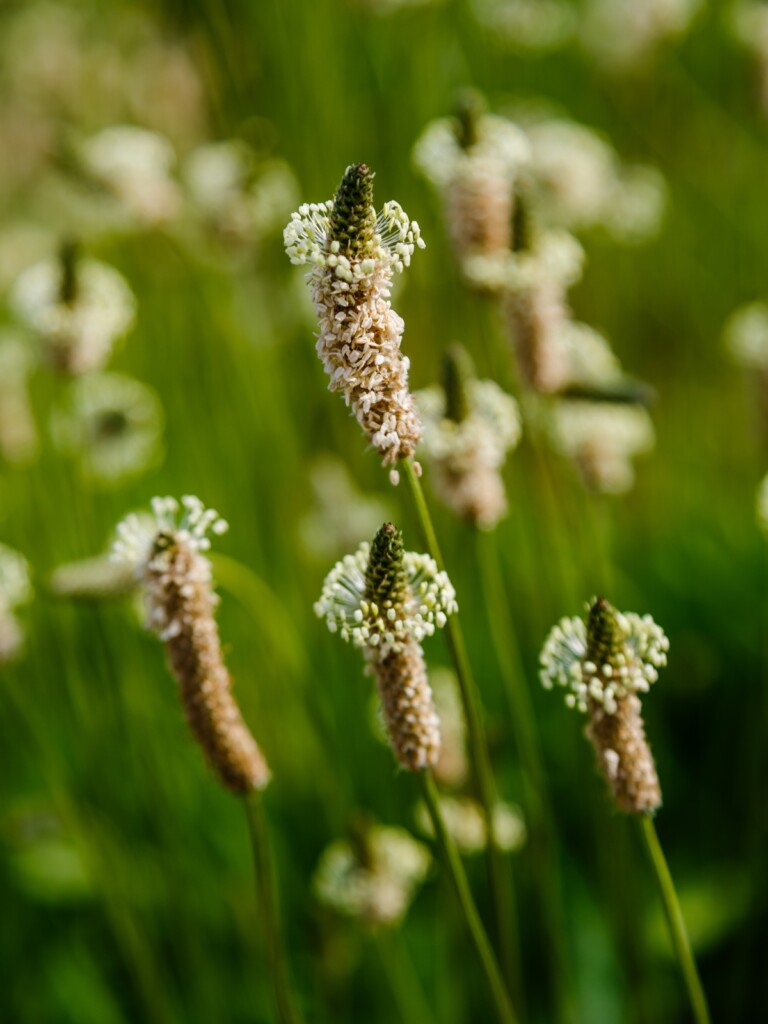
Mouth Rinse or Sore Throat Gargle
That same soothing action makes plantain perfect for oral health. You can make a strong infusion and use it as a mouth rinse to calm inflamed gums, ease mouth ulcers, or help with sore throats.
To make one, steep a tablespoon of dried plantain in a cup of hot water, let cool, and swish or gargle as needed. It’s an easy, natural way to support healing without the sting of commercial mouthwashes.
Plantain Tincture
A tincture of plantain preserves its medicinal benefits for long-term use. It’s especially useful for internal inflammation—think stomach ulcers, heartburn, or intestinal irritation.
To make one, chop fresh plantain and cover with high-proof alcohol in a clean jar. Let steep for 4–6 weeks, then strain. A few drops in water or tea can help soothe internal tissues and support healing from within.
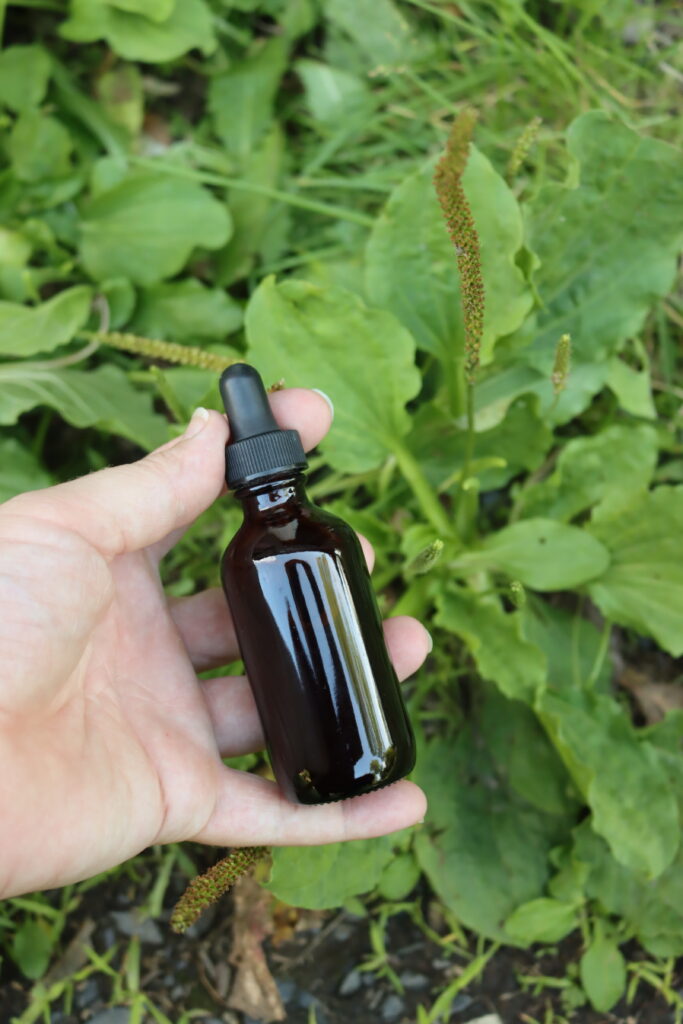
Soothing Bath Soak
If your skin is irritated, itchy, or healing from sunburn, a plantain bath can be a real relief. Add a few handfuls of dried leaves to a muslin bag or big tea strainer and steep in a warm bath.
You can also mix plantain with oats, calendula, or chamomile for an extra-calming soak. This is great for kids with bug bites or rashes—and for adults who need a little skin reset.
Cracked Skin and Callus Treatment
Plantain is excellent for softening dry, cracked skin. If you’ve been barefoot in the garden all summer, try applying plantain oil or salve to rough spots before bed, then put on socks overnight.
The anti-inflammatory properties help reduce swelling, while the emollient action softens tough skin. It’s also helpful on elbows, knees, and working hands that need a little extra TLC.
Plantain for Chickens (and Pets)
If you’ve got chickens, plantain can be added to their diet or used as a natural remedy. It supports healthy digestion and acts as a mild antimicrobial. You can toss fresh leaves into their run or mix dried leaf powder into feed.
For dogs or cats with irritated skin, a plantain rinse or salve can also be soothing. As always, introduce herbs slowly and check with a holistic vet when using plant medicine with animals.
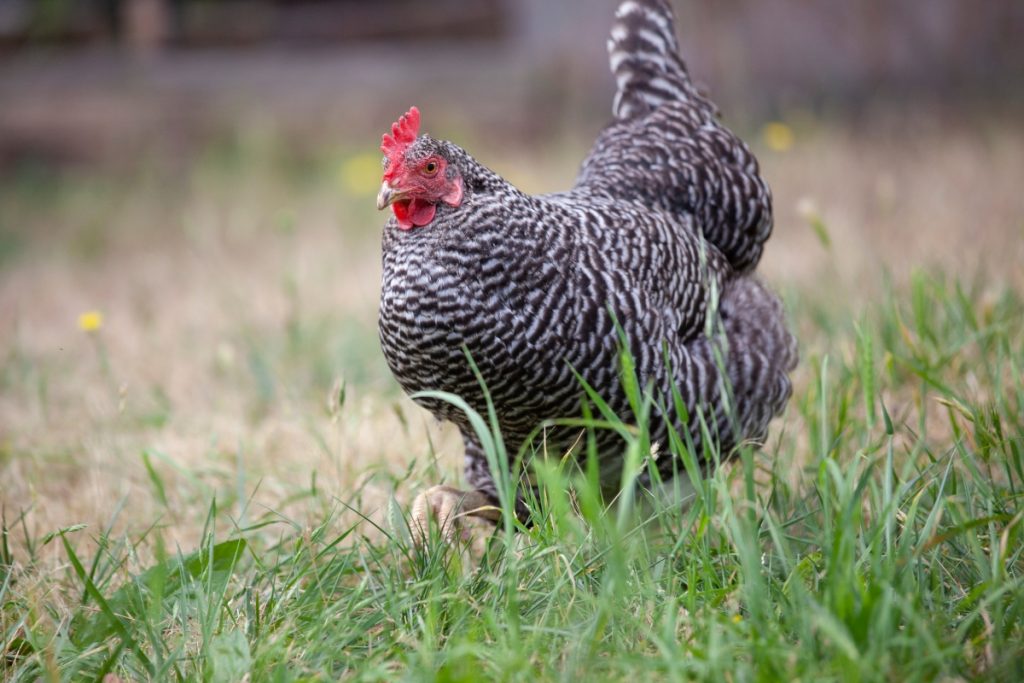
Plantain may be growing between the cracks in your sidewalk, but it deserves a lot more respect than it gets. It’s one of the most versatile herbs out there—easy to find, easy to use, and incredibly effective.
Whether you’re whipping up a quick poultice on the trail or making a shelf-stable salve at home, this plant absolutely earns a place in your herbal toolkit.
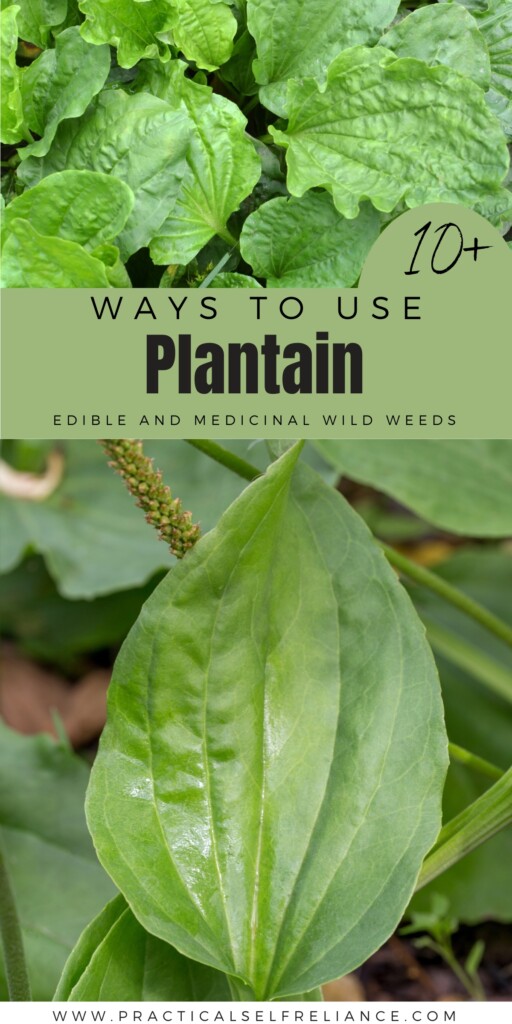
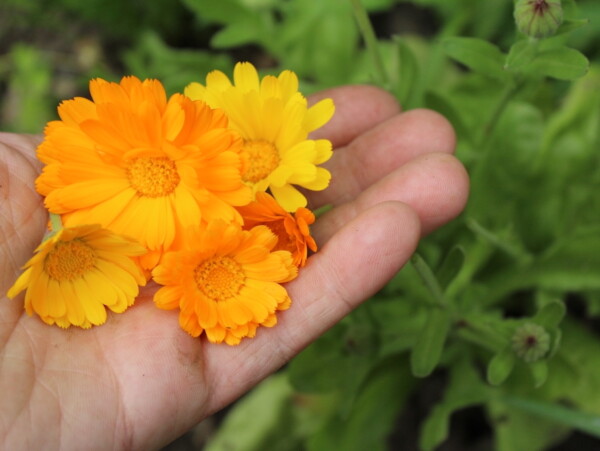
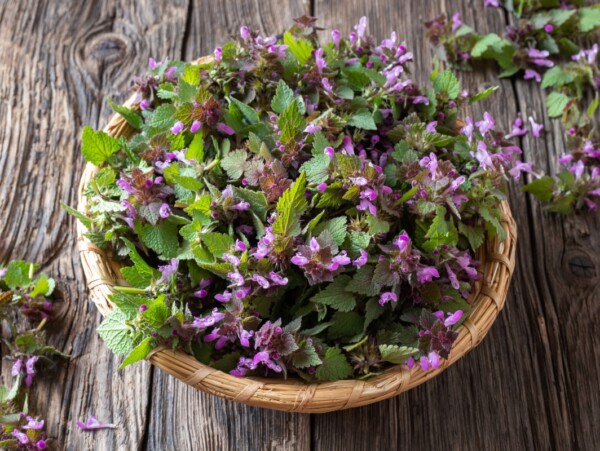
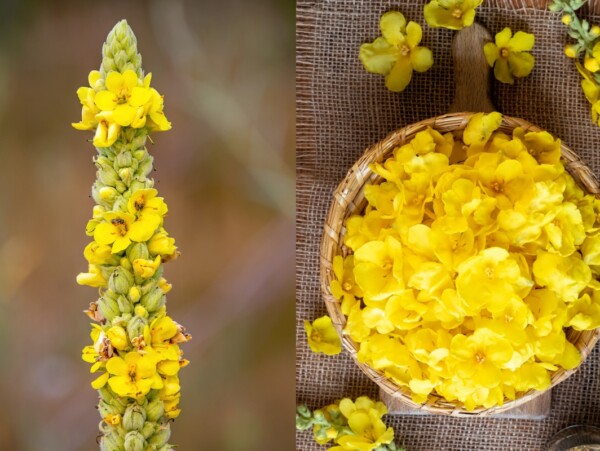
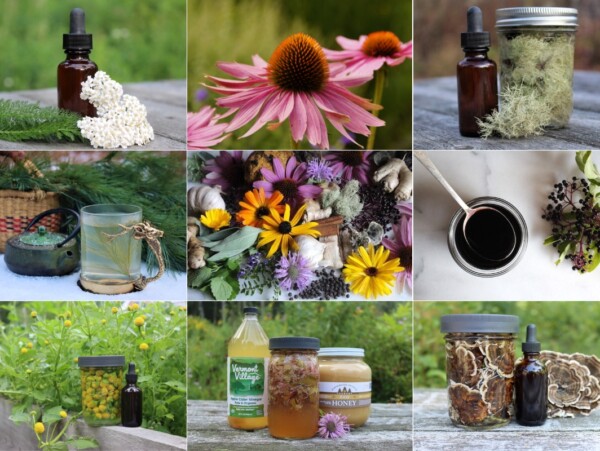
Plantain is one of my all-time favorite plants. She has a place of honor in my medicine cabinet and in my kitchen cabinet (along with lavender essential oil). I like to dry the leaves then process them to a fine powder in my spice grinder. I store it in containers and call it my “wound powder.” You didn’t mention how amazingly well it staunches bleeding, hence inclusion in my kitchen. Should you cut your finger, deeply, while working with a sharp knife. apply pressure then coat the area with dried plantain and wrap it tightly with a bandage. The plaintain staunches the bleeding just about instantly. I’ve converted many people to plaintains virtues as a plant ally.
I haven’t dried and powdered it, that’s such a good idea, thank you!
Thank you madam, I am a new follower, so thank you very much for the valuable information
You’re quite welcome! I’m glad you’re here =)